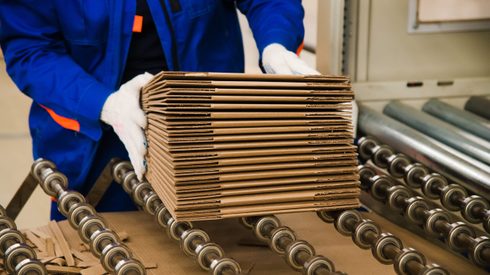After concluding massive investments in virgin paper production in recent years, Klabin, Brazil’s largest packaging paper producer, is moving forward with its strategy to increase paper integration in 2023.
Investments in paper integration
In early March, the company concluded the first stage of a 188-million-Reais ($35.7-million) investment at its Horizonte packaging unit in Ceará state, in northeastern Brazil, installing a new corrugator that will raise capacity there to 100,000 tonnes of corrugated board packaging per year, up from 20,000 tonnes per year.
This investment is part of a strategy to continually increase paper integration in Klabin’s processes when more kraftliner becomes available, Douglas Dalmasi, the company’s packaging business director, told Fastmarkets. He noted that the strategy began with the start-up of its paper machine (PM) No27 in 2021; that PM has capacity to produce 450,000 tpy of kraftliner paper.
“We did not have paper availability to grow in integration, but with the PM No27, we were able to parallelly approve growth in boxes,” Dalmasi said.
In 2020, Klabin acquired the operations of International Paper in Brazil, increasing their packaging market share from 17% to 23%. But the company still had to invest in conversion operations to meet demand from the packaging market. “We needed to follow the growth of this market, which is always above the GDP,” he said.
In 2021, the company approved a 340-million-Reais plan to debottleneck conversion units across Brazil; the special projects include the acquisition of printers, a bags production line and die cut equipment. The company is also making disbursements in the cities of Betim, Goiana and Lages.
“All this equipment is coming online now, bringing a lot of technology for printing and conversion. In Goiana, for example, the new seven-color printer with varnish brings a breakthrough technology for the northeastern region, serving clients in the fruit market with more sophisticated products,” Dalmasi said.
The Horizonte and Goiana units, both located in northeastern Brazil, target sectors that post higher growth rates compared with market segments located in the rest of Brazil, Dalmasi said.
Our regional strength in packaging combined with a growing fruit sector is very positive. We expect fruits exports to grow between 5-10% this year.
In the northeastern region alone, Klabin is increasing its packaging capacity to 300,000 tpy from 220,000 tpy. In Brazil, the company now has 1.2 million tpy of packaging capacity.
In paper bags, Klabin is investing to increase its capacity by 100 million bags per year to reach 1.4 billion bags annually. “The new bags line [in Lages] is the second in the world of its kind being installed. It has a 10-color printer focused on specialties with high added value, offering several resources in barriers and food contact,” Dalmasi said.
Positive market view and flexibility in production
Despite a negative business environment for corrugated packaging and containerboard in the international markets, Dalmasi said that Klabin’s outlook for the year remains good.
“We don’t think we will see something very different to what happened in January and February in the Brazilian market, which is a growth above the GDP. We should see the domestic corrugated packaging market growing by 1-2% this year. In the international market, the products that Brazil exports are very competitive, so I don’t believe in a dramatic drop in Brazilian exports,” he said.
According to the director, Klabin has been taking advantage of its production flexibility since last year to continue posting good results.
“We are using more paper that was being exported in packaging; we have hibernated our recycled paper units of Franco da Rocha and Paulinia, the latter which will resume production at some point. We are adding more virgin paper to our products,” Dalmasi said, explaining that quality increased a lot while costs decreased due to the products having a lower basis weight.
As for packaging costs, Dalmasi said he does not expect prices to drop even if demand weakens, because cost inflation continues to affect producers.
Our expectation is to keep following the inflation rate. Recovered paper costs, for example, have dropped but remain above pre-pandemic levels.
In the bags market, the company has maintained production at full capacity.
“Even with the new line, we will continue with our entire capacity occupied,” Dalmasi said. “Cement demand reduced earlier this year due to the heavy rain season and high interest rates in Brazil, but all other markets including exports are performing well. Paper bags are gaining market share, substituting other materials such as plastic and raffia in the food market.”
This article was first published in PPI Latin America, the industry’s most trusted pulp and paper market news and prices for Latin America. Speak to our team to find out more about our news and analysis products.







